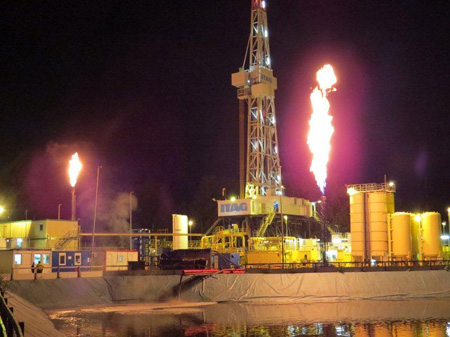Zbinden, D., Rinaldi, A. P., Diehl, T., & Wiemer, S. (2020). Potential influence of overpressurized gas on the induced seismicity in the St. Gallen deep geothermal project (Switzerland).. Solid Earth 11 (3), 909-933. doi: 10.5194/se-11-909-2020
Zbinden, D., Rinaldi, A. P., Diehl, T., & Wiemer, S. (2020). Hydromechanical Modeling of Fault Reactivation in the St. Gallen Deep Geothermal Project (Switzerland): Poroelasticity or Hydraulic Connection?. Geophysical Research Letters 47(3). e2019GL085201. doi: 10.1029/2019GL085201
Király‐Proag, E., Satriano, C., Bernard, P., & Wiemer, S. (2019). Rupture Process of the M w 3.3 Earthquake in the St. Gallen 2013 Geothermal Reservoir, Switzerland.. Geophysical Research Letters 46(14), 7990-7999. doi: 10.1029/2019GL082911
Kraft, T. & S. Wiemer (2019). GEOBEST-CH2 - Zwischenbericht II. Bericht des Schweizerischen Erdbebendienstes zu Händen des Bundesamtes für Energie, November 2018.
Kraft, T. & S. Wiemer (2018). GEOBEST-CH2 - Zwischenbericht II. Bericht des Schweizerischen Erdbebendienstes zu Händen des Bundesamtes für Energie, November 2018.
Kraft, T. & S. Wiemer (2017). GEOBEST-CH2 - Zwischenbericht I. Bericht des Schweizerischen Erdbebendienstes zu Händen des Bundesamtes für Energie, Dezember 2017.
Kraft, T. & S. Wiemer (2017). GEOBEST-CH - Abschlussbereicht. Bericht des Schweizerischen Erdbebendienstes zu Händen des Bundesamtes für Energie, Oktober 2017. Link
Wiemer, S., Kraft, T., Trutnevyte, E. and Philippe Roth (2017). “Good Practice” Guide for Managing Induced Seismicity in Deep Geothermal Energy Projects in Switzerland. Swiss Seismological Service at ETH Zurich. doi: 10.12686/a5
Kraft, T. & S. Wiemer (2016). GEOBEST-CH - Zwischenbericht II. Bericht des Schweizerischen Erdbebendienstes zu Händen des Bundesamtes für Energie, Dezember 2016.
Kraft, T. & S. Wiemer (2015). GEOBEST-CH - Zwischenbericht I. Bericht des Schweizerischen Erdbebendienstes zu Händen des Bundesamtes für Energie, Dezember 2015.
Kraft, T. & S. Wiemer (2015). Abschlussbericht, Projekt GEOBEST, Berichtszeitraum Okt. 2011 – Nov. 2015. Bericht des Schweizerischen Erdbebendienstes zu Händen des Bundesamtes für Energie, Dezember 2015. Link
Kraft, T. & S. Wiemer (2015). Zwischenbericht IV, Projekt GEOBEST, Bericht des Schweizerischen Erdbebendienstes zu Händen des Bundesamtes für Energie, Dezember 2015.
Kraft, T. & S. Wiemer (2014). Zwischenbericht III, Projekt GEOBEST, Bericht des Schweizerischen Erdbebendienstes zu Händen des Bundesamtes für Energie, November 2014.
Kraft, T. & S. Wiemer (2012). Zwischenbericht II, Projekt GEOBEST, Bericht des Schweizerischen Erdbebendienstes zu Händen des Bundesamtes für Energie, September 2012.
Kraft, T. & S. Wiemer (2011). Zwischenbericht I, Projekt GEOBEST, Bericht des Schweizerischen Erdbebendienstes zu Händen des Bundesamtes für Energie, August 2011.
